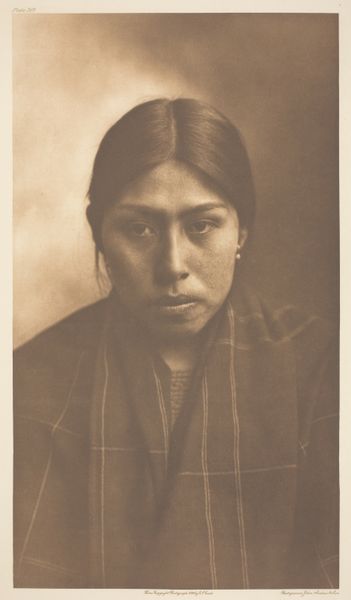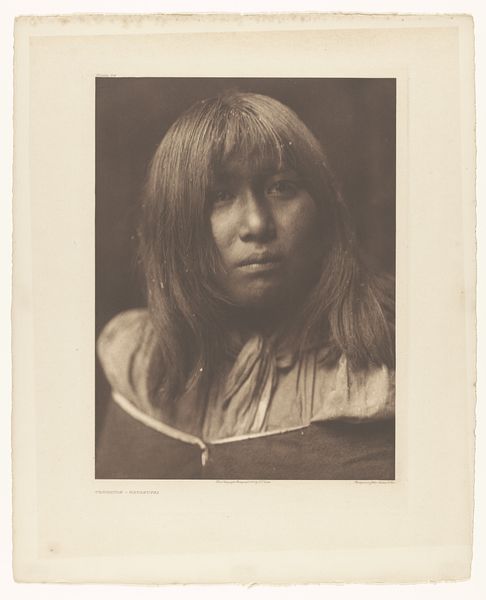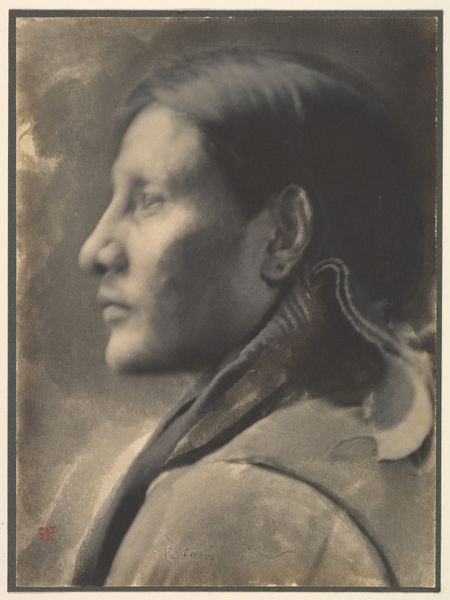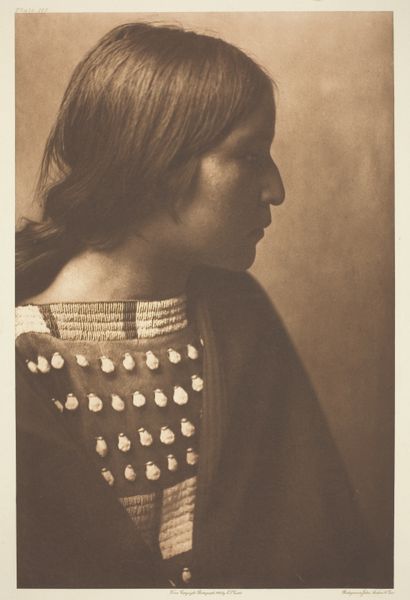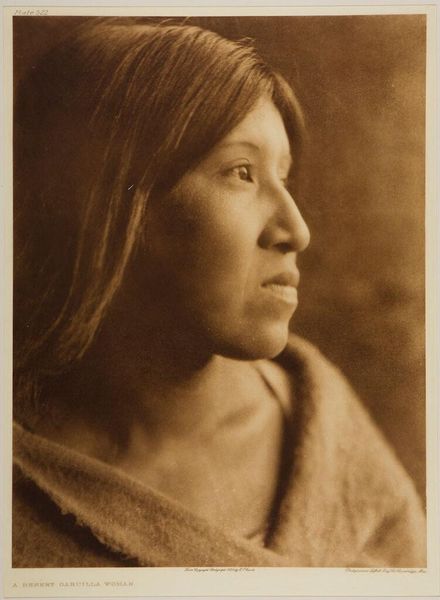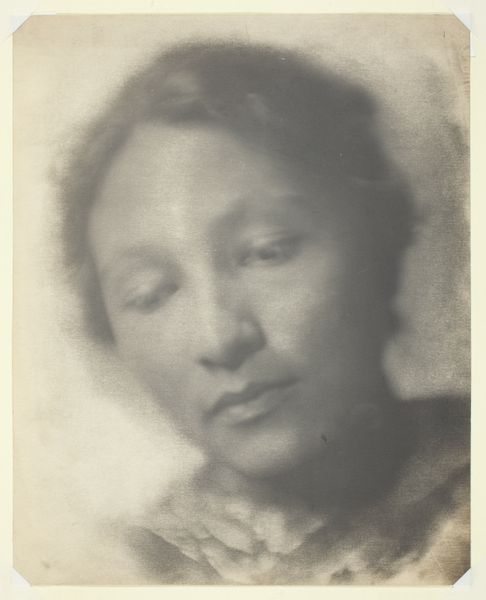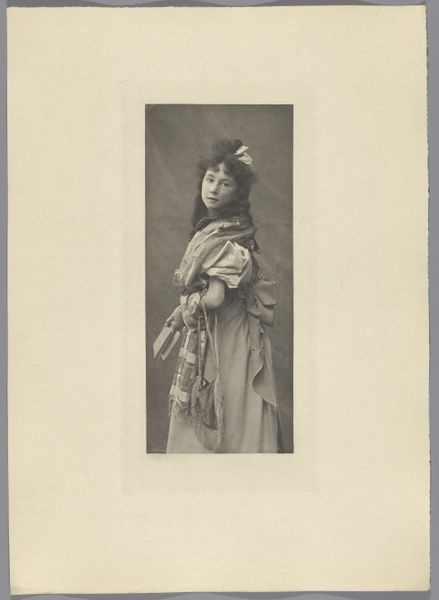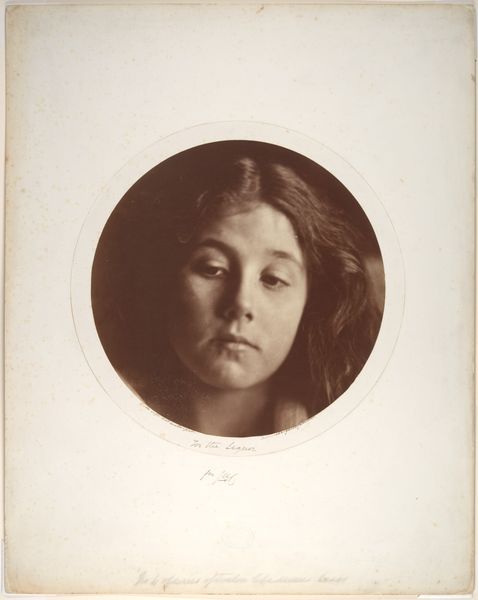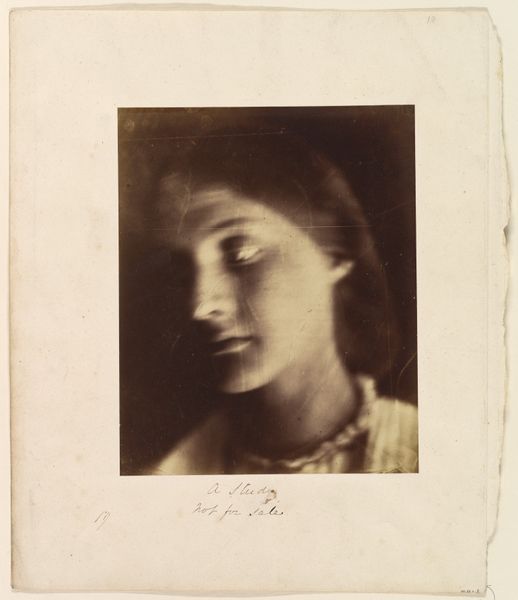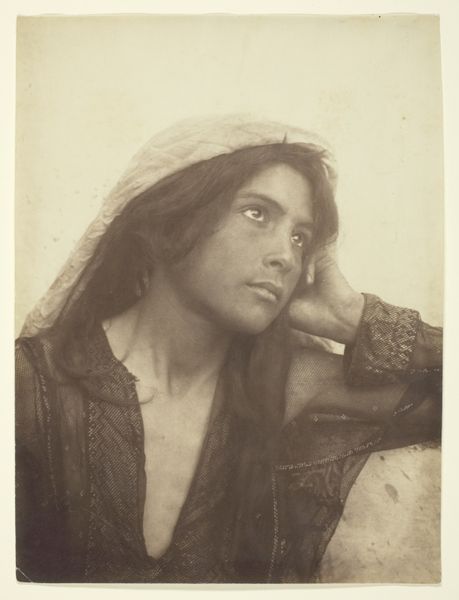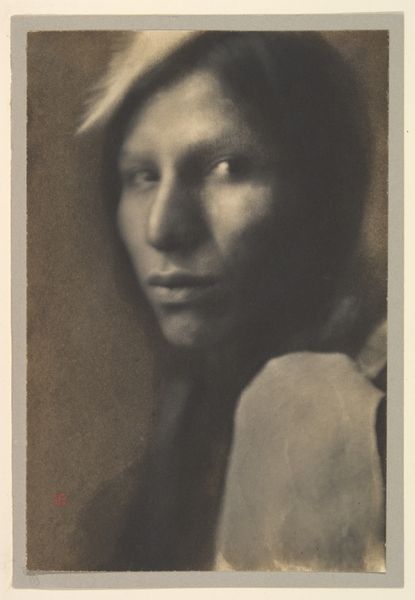
photography
#
portrait
#
pictorialism
#
photography
#
portrait photography
Dimensions: 39.4 × 22.2 cm (image/paper); 55.8 × 45.5 cm (mount)
Copyright: Public Domain
Curator: Standing before us is a photograph by Edward S. Curtis, taken in 1912, titled "Suquamish Girl." It's currently held at The Art Institute of Chicago. Editor: My first impression is one of serene melancholy. The sepia tone gives it a feeling of timelessness and somehow amplifies her introspective gaze. Curator: Curtis was deeply embedded in Pictorialism; a movement emphasizing artistic manipulation in photography. Think about the labor invested in constructing these soft-focus effects in the darkroom! It was more than documentation; it was artistic intervention. He used platinum and vandyke brown print methods. Each material choice emphasizes the handcraft involved in photography before mass reproduction. Editor: The choice of sepia reinforces the symbol of memory. Her shawl drapes like a flag or a symbolic wrapping, containing histories that remain just out of reach. The soft light also helps draw out this idea of fading. It echoes ideas around memory itself, where details gradually erode and transform over time. Curator: It's important to consider the fraught history of Curtis’s work, though. He aimed to document what he believed was a "vanishing race". His photographs were often staged, presenting a romanticized, constructed image of Native Americans, glossing over the complexities and diversity of their lives and suppressing cultural dynamism. He would provide outfits and props and essentially engage in a commercial enterprise of cultural artifacting. Editor: You're absolutely right. It presents a challenge. On the one hand, the portrait aesthetic captures a moment, an identity—but what is it really communicating or overwriting? Perhaps what haunts me is this question of intention—both Curtis's and what we project onto her expression now. She seems poised at a fulcrum point where a past and future could both occur. Curator: Seeing this photo now pushes me to confront the power structures inherent in the act of representation, as well as the complex interplay between intention, material production, and the narratives that photographs come to embody over time. Editor: Indeed, grappling with those layers deepens the impact of her image. The work exists not simply as a record but as an ongoing dialogue on the burden and endurance of identity.
Comments
No comments
Be the first to comment and join the conversation on the ultimate creative platform.
